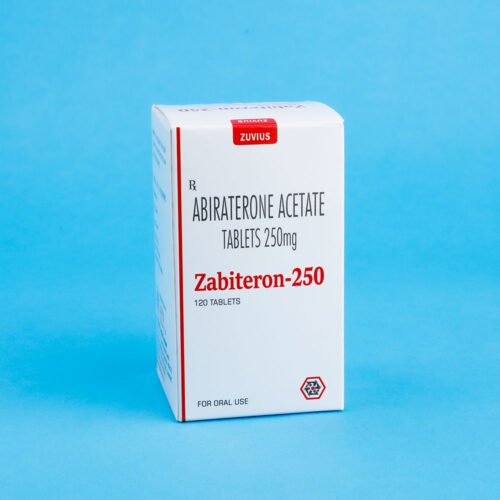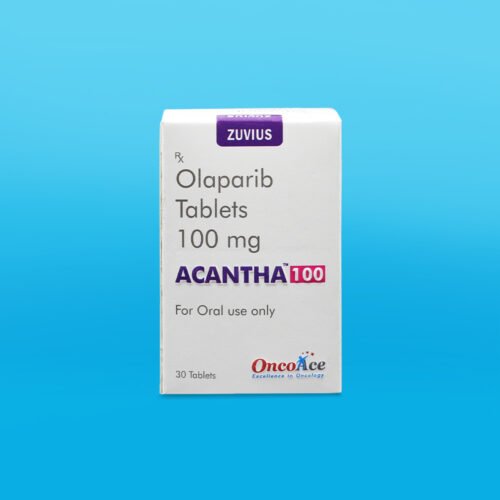Peg Zuvigrast- Peg Filgrastim inj 6 mg
Peg Filgrastim inj
Strength: 6mg
Pack Size: 1 vial
Drug Class: Hematopoietic Growth Factors
Dosage and Administration:
The recommended dosage of pegfilgrastim is a single subcutaneous injection of 6 mg administered by subcutaneous route once per chemotherapy cycle. Pegfilgrastim should not be administered in the period between 14 days before and 24 hours after administration of cytotoxic chemotherapy. The 6 mg fixed-dose formulation should not be used in infants, children, and smaller adolescents weighing less than 45 kg. No dosing adjustment is necessary for renal dysfunction. Pegfilgrastim should be visually inspected for discoloration and particulate matter and if found, should not be administered.
Cold Storage: yes
Pegfilgrastim is a covalent conjugate of recombinant methionyl human GCSF (filgrastim) and monomethoxypolyethylene glycol. Filgrastim is a water-soluble 175 amino acid protein with a molecular weight of approximately 19 kilodaltons. Filgrastim is obtained from the bacterial fermentation of a strain of Escherichia coli transformed with a genetically engineered plasmid containing the human GCSF gene. To produce pegfilgrastim, a 20 kDa monomethoxypolyethylene glycol molecule is covalently bound to the N-terminal methionyl residue of filgrastim. The average molecular weight of pegfilgrastim is approximately 39 kDa.
Each Syringe contains 6 mg Pegfilgrastim (based on protein weight) in a sterile, clear, colorless, preservative-free solution. The pH of the solution is 4.0.
Pegfilgrastim is indicated to decrease the incidence of infection, as manifested by febrile neutropenia, in patients with non-myeloid malignancies receiving myelosuppressive anticancer drugs associated with a clinically significant incidence of febrile neutropenia.
Administration of pegfilgrastim is effective and safe in reducing the risk of grades 3/4 neutropenia and FN in breast cancer patients after receiving chemotherapy. Pegfilgrastim products are colony-stimulating factors that act on hematopoietic cells by binding to specific cell surface receptors, thereby stimulating proliferation, differentiation, commitment, and end cell functional activation.
- Read the label carefully before use
- Keep out of the reach of children
- Do not exceed the recommended dose
Use with chemotherapy and / or radiation therapy
Pegfilgrastim should not be administered in the period between 14 days before and 24 hours after administration of cytotoxic chemotherapy because of the potential for an increase in sensitivity of rapidly dividing myeloid cells to cytotoxic chemotherapy. The use of pegfilgrastim has not been studied in patients receiving chemotherapy associated with delayed myelosuppression (e.g. Nitrosourea, Mitomycin C). The administration of pegfilgrastim concomitantly with 5fluorouracil or other antimetabolites has not been evaluated in patients. Administration of pegfilgrastim at 0, 1 and 3 days before 5fluorouracil results in increased mortality in mice: administration of pegfilgrastim 24 hours after 5fluorouracil did not adversely affect survival. The use of pegfilgrastim has not been studied in patients receiving radiation therapy.
Potential for tumour growth stimulating effects on malignant cells
The granulocyte colony stimulating factor (GCSF) receptor through which pegfilgrastim and filgrastim act has been found on tumor cell lines. The possibility that pegfilgrastim acts as a growth factor for any tumor type, including myeloid malignancies and myelodysplasia, disease for which pegfilgrastim is not approved, cannot be excluded.
Laboratory Monitoring
To assess the patient’s hematologic status and ability to tolerate Myelosuppressive chemotherapy, a complete blood count and platelet count should be obtained before chemotherapy is administered. Regular monitoring of hematocrit value and platelet count is recommended.
Carcinogenesis, Mutagenesis & Impairment of Fertility
No mutagenesis studies were conducted with pegfilgrastim. The carcinogenic potential of pegfilgrastim has not been evaluated in long term animal studies. In toxicity studies of 6 months duration in rats given once weekly subcutaneous injections of upto 1000 mcg/Kg of pegfilgrastim, no precancerous or cancerous lesions were noted. When administered once weekly via subcutaneous injections to male and female rats at dose upto 1000 mcg/Kg prior to, during mating, reproductive performance, fertility and sperm assessment parameters were not affected.
USE IN SPECIAL POPULATIONS
Pregnancy
Pregnancy Category C
There are no adequate and wellcontrolled studies in pregnant woman. Pegfilgrastim should be used during pregnancy only if potential benefit to the mother justifies the potential risk to the fetus.
Nursing mothers
It is not known whether pegfilgrastim is secreted in human milk. Caution should be exercised when administered to a nursing woman.
Pediatric Use
Safety and effectiveness of pegfilgrastim in pediatric patients have not been established. The 6 mg fixeddose formulation should not be used in infants, children and smaller adolescents weighing less than 45 kg. It is not known whether pegfilgrastim is secreted in human milk. Caution should be exercised when administered to a nursing woman.
Geriatric Use
No overall differences in safety or effectiveness were observed between patients aged 65 and older and younger patients.
Renal Impairment
Pegfilgrastim dose adjustment in patients with renal dysfunction is not necessary.






